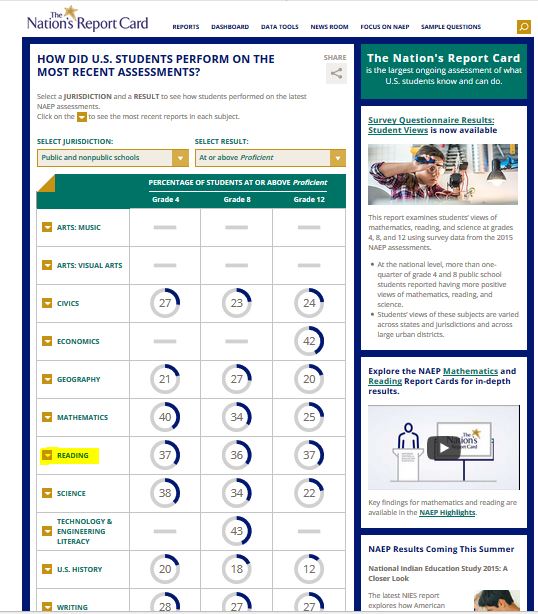No, Dr. Blank. Please reread the Nation’s Report Card again. The problem is much worse than how you describe it.
What the Nation’s Report Card actually shows is that in 2017 only 37% of fourth grade students, 36% of eighth graders, and 37% of twelfth graders scored proficient or above in reading (National Center Education Statistics, 2017). To be labeled proficient, the student must be able to read at or above grade level. Read the fine print very carefully. Be careful in reading these statistics because many, like Dr. Blank, believe that the Nation’s Report Card says only 37% cannot read; that is not what the statistics show. What it says is that only 37% of fourth graders across the nation were able to read at a fourth-grade level. That is less than half.
The eighth grade statistics were even worse — only 36% could read at the eighth-grade level and only 37% could read at grade level by the time they reached twelfth grade. That means that over half of fourth graders, eight graders, and even half of twelfth graders could not read at their respective grade level when tested. We must learn how to read statistics correctly, especially those who claim to be experts. Yes, we all make mistakes, but the children and teens who are suffering across the nation right now from reading failure cannot afford any more mistakes. The children and teens across the United States and around the world, need the people in power to correct their mistakes and start using methods that work.
Also see my post of 1/2/2018.

 RSS Feed
RSS Feed
